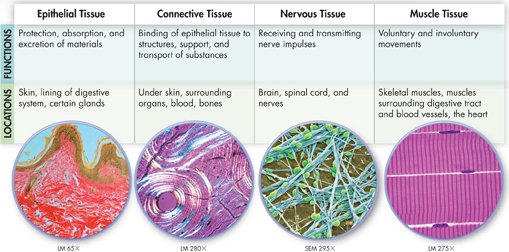
FIGURE 30–1 Types of Tissues The four major types of tissues in the human body are epithelial tissue, connective tissue, nervous tissue, and muscle tissue. Predict Which organ may not contain all four types of tissue?
ddd▸ Epithelial Tissue The tissue that lines the interior and exterior body surfaces is called epithelial tissue. Your skin and the lining of your stomach are both examples of epithelial tissue.
▸ Connective Tissue A type of tissue that provides support for the body and connects its parts is connective tissue. This type of tissue includes fat cells, bone cells, and even blood cells. Many connective tissue cells produce collagen, a long, tough fiber-like protein that is the most common protein in the body. Collagen gives tissues strength and resiliency, helping them to keep their shape even under pressure.
▸ Nervous Tissue Nerve impulses are transmitted throughout the body by nervous tissue. Neurons, the cells that carry these impulses, and glial cells, which surround and protect neurons, are both examples of nervous tissue.
▸ Muscle Tissue Movements of the body are possible because of muscle tissue. Some muscles are responsible for the movements you control, such as the muscles that move your arms and legs. Some muscles are responsible for movements you cannot control, such as the tiny muscles that control the size of the pupil in the eye.
Organs A group of different types of tissues that work together to perform a single function or several related functions is called an organ. The eye is an organ made up of epithelial tissue, nervous tissue, muscle tissue, and connective tissue. As different as these tissues are, they all work together for a single function—sight.
Organ Systems An organ system is a group of organs that perform closely related functions. For example, the brain and spinal cord are organs of the nervous system. The organ systems interact to maintain homeostasis in the body as a whole. The organ systems, along with their structures and main functions, are shown on the next page.
Table of Contents
- Formulas and Equations
- Applying Formulas and Equations
- Mean, Median, and Mode
- Estimation
- Using Measurements in Calculations
- Effects of Measurement Errors
- Accuracy
- Precision
- Comparing Accuracy and Precision
- Significant Figures
- Calculating With Significant Figures
- Scientific Notation
- Calculating With Scientific Notation
- Dimensional Analysis
- Applying Dimensional Analysis




